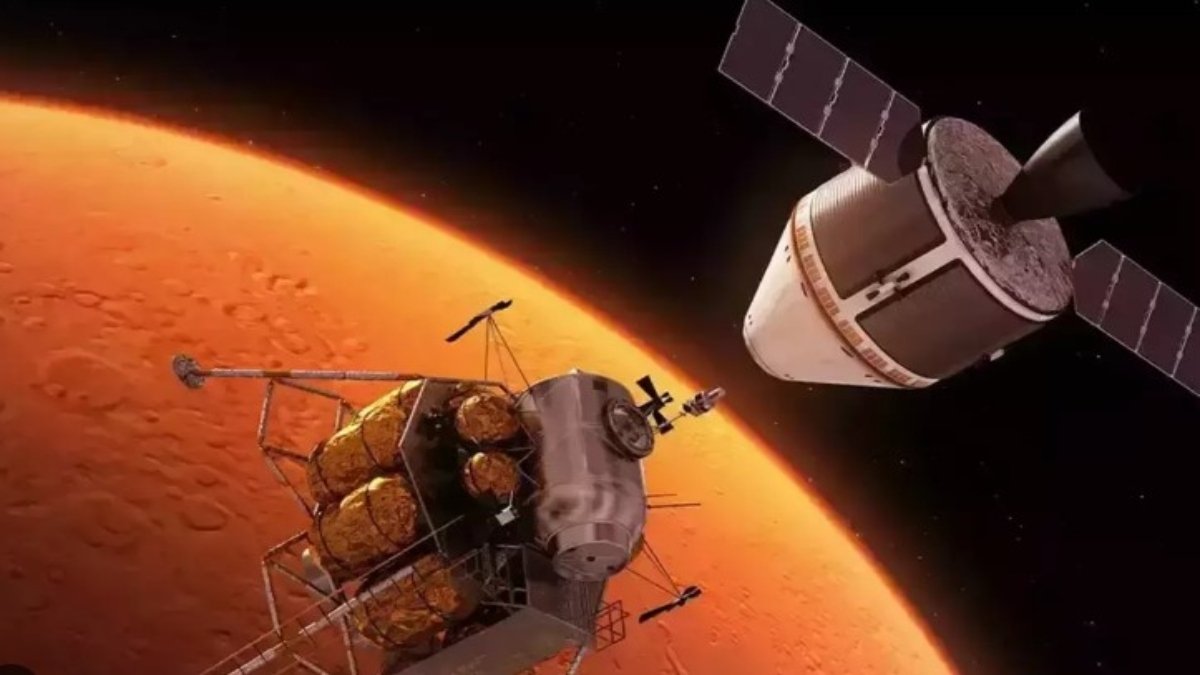Venus Orbiter Mission
Indian Space Research Organization (ISRO)) sent Aditya L One to collect information related to the Sun in space. For the Moon, it sent Chandrayaan-3, for Mars it launched the Mars Orbiter Mission, and for the hottest planet Venus, ISRO is now preparing to go to Venus with the Venus Orbiter Mission (VOM). The Indian space agency has announced that the spacecraft will take a total of 112 days to make the mysterious journey from Earth. The spacecraft is scheduled to launch on March 29, 2028, and has been named Shukrayaan-1. This will be India’s first attempt in exploring Venus.
India will reach Venus
ISRO’s powerful LVM-3 (Launch Vehicle Mark 3) rocket will be used to carry the Venus Orbiter Mission spacecraft on its 112-day journey to Venus. The orbiter is expected to reach its destination on July 19, 2028, showcasing India’s growing capabilities in planetary exploration in space.
VOM’s goal is to study Venus’s atmosphere, surface, and geological features using sophisticated scientific instruments. The mission’s primary objectives include investigating the planet’s atmospheric composition, surface features, and possible volcanic or seismic activity. India’s Venus Orbiter Mission will be equipped with a suite of scientific instruments designed to explore the atmosphere, surface and plasma environment of Venus.
Now the secrets of Venus will be revealed
The Venus Orbiter Mission spacecraft will carry an array of state-of-the-art instruments, including synthetic aperture radar, infrared and ultraviolet cameras and sensors to study the ionosphere of Venus. These instruments will help scientists unravel the mysteries of Venus’s dense, carbon dioxide-rich atmosphere and explore the possibility of active volcanoes on the planet’s surface.
Know the specialty of Venus Orbiter Mission
VSAR (Venus S-band Synthetic Aperture Radar): Its purpose is to discover active volcanoes and map Venus with high resolution, providing insight into the planet’s topography and surface properties.
VSEAM (Venus Surface Emissivity and Atmospheric Mapper): This hyperspectral spectrometer will study the surface and atmosphere of Venus, focusing on mapping volcanic hotspots, cloud structure, and water vapor.
VTC (Venus Thermal Camera): Designed to map thermal emissions from the clouds of Venus, it will provide important data on atmospheric dynamics and planet-scale features.
planet venus
VCMC (Venus Cloud Monitoring Camera): This UV and visible wavelength camera will capture atmospheric circulation dynamics and study wave phenomena and lightning.
LIVE (Lightning Instrument for Venus): LIVE will detect electrical activity in Venus’s atmosphere, analyzing lightning and plasma emissions.
VASP (Venus Atmospheric Spectropolarimeter): This instrument will investigate cloud properties and global circulation.
SPAV (Solar Occultation Photometry): SPAV will measure the vertical distribution of aerosols and haze in the Venus mesosphere.
India’s threat in space
India’s threat will be visible in space
The Venus Orbiter Mission represents a collaborative effort with international participation from countries such as Russia, France, Sweden and Germany. The Swedish Institute of Space Physics (IRF) will contribute the Venusian Neutrals Analyzer (VNA) instrument to study charged particles from the atmospheres of the Sun and Venus. With a budget of ₹1,236 crore (about $150 million) approved by the Government of India, the Venus Orbiter Mission demonstrates India’s commitment to advancing its space exploration capabilities.
